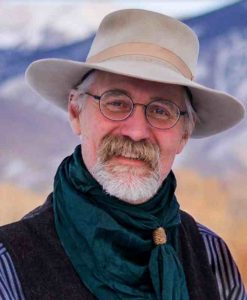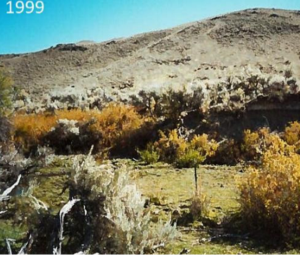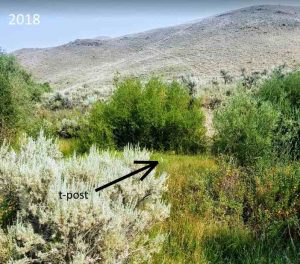
Glenn Elzinga is a rancher on mostly public lands in the Idaho Rocky Mountains. He’s also a forester, and his wife is a botanist…and together they have developed a practice of cattle grazing called “inherding” that is very healthy for the cattle because of the diversity of plants they eat; that restores streams and creeks to the point that beaver have returned; and that allows native plants and wildlife–including sage grouse and wolves–to flourish on the land. It’s labor-intensive and yet economically viable. Listen to find out how they do it.


Alderspring Ranch 1999 and 2018
1’48 How Alderspring ranch began–stresses and challenges
3’49 Starting grassfed beef and organic
4’58 Wolf depredation
6’55 Other problems on the range–riparian problems caused by cattle
10’03 Getting inspiration from old paintings of cowboys
11’17 Deciding to live with their cattle and do “inherding.”
12’52 Partnering with Nature Conservancy
14’30 What the days are like doing inherding
15’35 Inspiration from book by Michel Meuret and Fred Provenza
16’19 “Ecological doctoring”
16’45 Connection among plant diversity, animal health, and health of the meat
17’13 500 different native plants that cattle will eat
18’22 Grass-fed beef with diverse grasses and plants
20’02 Directing the cattle to eat a diverse diet
22’02 Training cows not to damage riparian areas
24’35 Teaching cows to eat a more varied diet
28’11 What are the cows drinking if you’re keeping them away from riparian areas
29’41 The reappearance of beavers
31’12 Other examples of wildlife regeneration
31’58 Return of sage grouse
33’45 Return of great basin wild rye
35’01 Inherding as a kind of holistic range management
37’18 The intensity of commitment of inherding
39’41 Taste testing
40’37 Connecting nutrition with public lands
42’05 Compatibility of recreation and grazing?
45’28 What happened when they took cows off the Italian Alps
46’30 Ketcham, Idaho, Trailing of the sheep festival
47’19 Do enough people want to do this kind of work?
48’53 The kind of toughness required to do the job
53’29 Teaching others this method
54’50 Combination of skills required
55’35 Possibility of journeyman programs
58’37 Tipping point in agriculture


